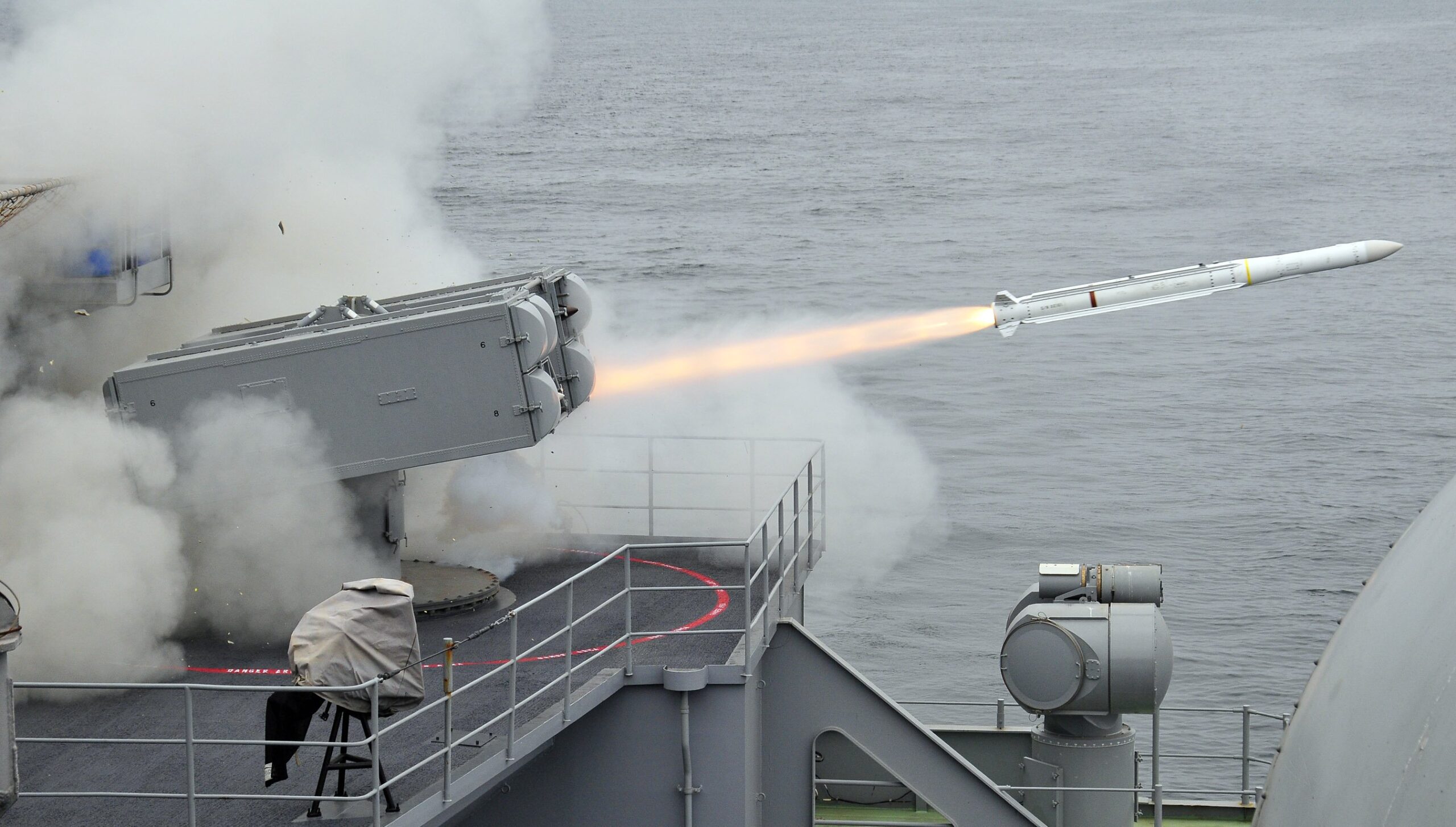Raytheon Missiles and Defense, Tucson, Arizona, is awarded a $32,192,842 firm-fixed-price contract modification to previously awarded contract N00024-15-C-5420 to complete engineering and manufacturing development software development, testing and support to complete the government operational test and evaluation of the Block II Evolved Sea Sparrow Missile (ESSM). The ESSM program is an international cooperative effort to design, develop, test and procure ESSM missiles. The ESSM provides enhanced ship defense. Work is expected to be completed by August 2021. This contract modification was not competitively procured in accordance with 10 U.S. Code 2304(c)(4) – international agreement. The Naval Sea Systems Command, Washington, D.C., is the contracting activity.
The RIM-162 Evolved SeaSparrow Missile (ESSM) is a development of the RIM-7 Sea Sparrow missile used to protect ships from attacking missiles and aircraft. ESSM is designed to counter supersonic maneuvering anti-ship missiles. ESSM also has the ability to be “quad-packed” in the Mark 41 Vertical Launch System, allowing up to four ESSMs to be carried in a single cell. The ESSM® guided missile is an international cooperative upgrade of the RIM-7 Seasparrow Missile. Developed by the U.S. Navy and nine of the other 11-member nations of the NATO SEASPARROW Consortium, the ESSM missile is bringing transformational anti-ship missile defense capabilities to the U.S., NATO and other allies. Members of the Consortium include Australia, Belgium, Canada, Denmark, Germany, Greece, the Netherlands, Norway, Portugal, Spain, Turkey and the United States.

In the 2000s the NATO Seasparrow Project Office began planning an upgraded Block 2 version of the ESSM. In 2014 Canada pledged 200M CAD to underwrite their share of the Block 2’s development cost. ESSM Block 2 leverages the existing Block 1 rocket motor and features a dual-mode X band seeker, increased maneuverability, and other enhancements. Block 2 features enhanced communications systems that allow for mid-course guidance correction, which makes the missiles easily networked into the Navy’s emerging Cooperative Engagement Capability. Unlike Block 1, Block 2’s active radar homing seeker will support terminal engagement without the launch ship’s target illumination radars. The improved ESSM Block II will be fielded by the US Navy from 2020.
The NATO Seasparrow Project Office recently conducted the first live fire test of the Evolved Seasparrow Missile (ESSM) Block 2 anti-air missile, proving out the missile’s new seeker. The ESSM Block 2 successfully intercepted a BQM-74E aerial target with its active guidance seeker-head, the main technology that distinguishes Block 2 from the in-service semi-active homing ESSM that finds its target via radar and midcourse data uplinks from the ship that fired the missile. Block 2 will have both active and semi-active guidance systems. The ESSM Block 2 will likely be employed from the Navy’s future frigate for self-defense or to defend logistics ships the frigate may escort. The Block 2 missile could also be fielded on any ship with a Mk 41 Vertical Launching System, which can fit a quad-pack of ESSMs in one VLS cell.

















